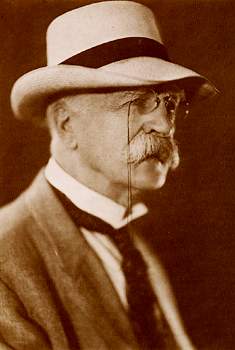George Keller (George Keller)

George Keller was born on December 15, 1842 in Cork in Ireland to Thomas Keller (1804-1880) and Susan Pratt (1805-1888). Keller emigrated with his family to New York City as a child. Irish immigrants were at the time considered inferior, and during his early years Keller endured a considerable measure of hardship and discrimination. Lacking connections and unable to obtain schooling in Europe like many of his professional peers, an ambitious nature and a school of hard knocks education gave Keller an adequate base of knowledge. As a young man, he accepted employment with an Irish architect in Washington, D.C., but returned to New York to join the firm of architect Peter B. Wight. This was the beginning of a lifelong friendship between the two. Keller’s association with Wight introduced him to the aesthetic philosophy of John Ruskin and to serious architectural study, which was cut short by the outbreak of the Civil War. Though Keller planned to join the Union Army, a dry inkwell prevented him from signing the enlistment papers. Choosing to see this as an ill omen, he gladly accepted an engineering position with the Brooklyn Navy Yard instead. Moving to Hartford at the war’s end, he took a job designing monuments. In 1903 George Keller became the 3rd architect to work on the Christ Church Cathedral in Hartford. He based his contribution to the design on the York Cathedral, from which Ithiel Town, the original architect, had drawn inspiration.
The postwar building boom brought George Keller to national prominence. Though he won design competitions for Civil War monuments in several cities, his Soldiers and Sailors Memorial Arch at the entrance to Bushnell Park in Hartford, Connecticut, boldly broke the conventional form that had become the accepted configuration. Monuments of this type typically consisted of a cylindrical column, or shaft, surmounted by an allegorical female figure, usually Victory, with four sculpted figures surrounding the base. In contrast, Keller’s Hartford monument, an eclectic Romanesque construction dedicated in 1886, was “perhaps the first permanent triumphal arch in the United States.” One of the arch’s most striking elements is a bas-relief frieze featuring life-size figures carved by Bohemian-born sculptor Caspar Buberl. The north side of the frieze was carved by English-born sculptor Samuel James Kitson. The Memorial Arch was built as a gateway to the pre-existing Park River Bridge, which was renamed the Soldiers and Sailors Memorial Bridge. The bridge has since been demolished, the river arched over and buried, and the ground level raised and turned into parkland.
George Keller’s involvement with the James A. Garfield Memorial in Cleveland began after he submitted an architectural design to the trustees of the Garfield National Memorial Committee. The committee, headed by ex-President Rutherford B. Hayes along with Jeptha H. Wade, president of Cleveland’s Lake View Cemetery, had been formed for the purpose of securing a plan for a memorial to President James A. Garfield following his assassination in 1881. To this end during the autumn of 1883 the committee sponsored a design competition in which Keller took part. The competition promised a prize of $1,000 to the winning design, thus attracting not only American but also European entries. To judge the submissions, the committee obtained the assistance of Boston architect Henry van Brunt and English-born architect Calvert Vaux of New York City. Both van Brunt and Vaux ultimately chose Keller’s design, and he was awarded the commission on June 24, 1884. Excavation for the monument at Lake View Cemetery began on October 6, 1885; it was dedicated on Memorial Day, May 30, 1890. Once again, Keller chose Caspar Buberl to execute figural friezes for his design.
Born
- December, 15, 1842
- Cork, Ireland
Died
- July, 07, 1935
- USA
- Hartford, Connecticut
Cemetery
- Soldiers and Sailors Memorial Arch
- Hartford, Connecticut
- USA

